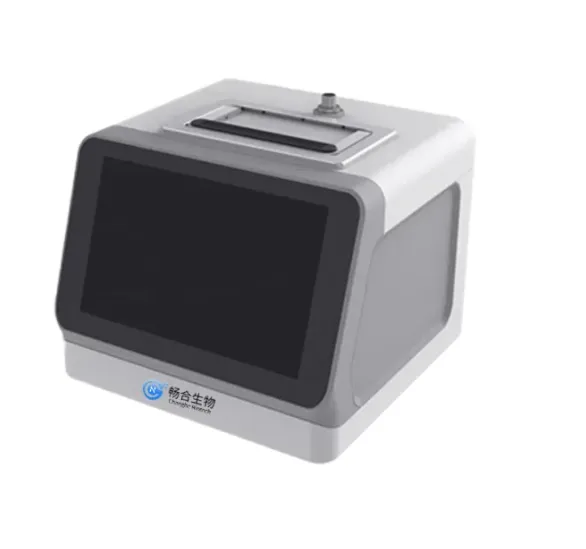
Choosing the Right Bacteria Detection Device for Your Needs
In various fields, from healthcare and food safety to environmental monitoring, the ability to accurately detect bacteria is crucial. Selecting the appropriate د باکتریا کشف کولو وسیله can be a complex task, especially when considering specialized tools like mold air samplers and mould detector devices. Understanding your specific requirements and the features of different devices is key to making an informed decision.

Assessing Needs for Bacteria Detection Device Selection
The first step in choosing a د باکتریا کشف کولو وسیله is to clearly define your needs. Are you looking to detect general bacteria in a food production facility, or are you focused on identifying specific pathogens? For example, in a hospital setting, the need might be for a device that can quickly detect harmful bacteria like MRSA. When it comes to mold - related concerns, if you suspect mold contamination in your home or workplace, a mold air sampler یا د قالب کشف کوونکی وسیله would be more appropriate. Determining the type of bacteria or mold you want to detect, the sample size, and the level of accuracy required will narrow down your options significantly.
Exploring Types of Bacteria Detection Devices
There is a wide range of bacteria detection devices available, each with its own strengths and limitations. Some devices use rapid test kits that provide quick results but may have lower sensitivity. Others, such as polymerase chain reaction (PCR) - based bacteria detection devices, offer high accuracy but can be more expensive and require trained personnel to operate. Mold air samplers are specialized tools designed specifically to capture airborne mold spores. They come in different styles, like impingers that collect spores by impinging air onto a collection medium, or cyclones that separate spores based on their size and density. Mould detector devices, on the other hand, can range from simple visual inspection tools to more advanced electronic devices that can detect hidden mold growth by measuring moisture levels and temperature changes in walls or other structures.
Evaluating Performance of Bacteria Detection and Mold Sampling Devices
The performance and accuracy of a د باکتریا کشف کولو وسیله, mold air sampler، یا د قالب کشف کوونکی وسیله are critical factors. Look for devices that have been tested and certified by relevant authorities. For bacteria detection devices, check the limit of detection, which indicates the lowest concentration of bacteria the device can accurately identify. In the case of mold air samplers, consider the sampling efficiency, which shows how well the device captures mold spores from the air. Mould detector devices should be able to accurately pinpoint the location and extent of mold growth. Reading reviews and comparing the performance data of different devices can help you gauge their reliability in real - world scenarios.
Choosing the Right Bacteria Detection Device for Your Needs FAQS
How to Select a Suitable Bacteria Detection Device for Your Industry?
Research the specific regulations and standards in your industry. For example, the food industry has strict guidelines for bacteria detection in food products. Look for bacteria detection devices that are compliant with these standards and have been used successfully in similar settings. You can also consult industry associations or regulatory bodies for recommendations on suitable devices.
What Key Features to Look for in a Mold Air Sampler?
Key features of a mold air sampler include high sampling efficiency, compatibility with different collection media, ease of calibration, and portability. A sampler with adjustable sampling flow rates can be more versatile, allowing you to sample from different environments. Additionally, choose a mold air sampler that is made of durable materials to withstand various field conditions.
Can a Mould Detector Device Detect Hidden Mold?
Yes, many advanced mould detector devices can detect mold behind walls. They use technologies such as infrared imaging to detect temperature differences caused by mold growth, or moisture sensors to identify areas with high humidity levels, which are conducive to mold development. However, the accuracy may vary depending on the device and the specific circumstances.
How Frequently Should Bacteria Detection Devices be Calibrated?
The calibration frequency depends on the type of د باکتریا کشف کولو وسیله and how frequently it is used. Generally, devices used in critical applications, such as in healthcare or food safety, should be calibrated regularly, often monthly or quarterly. Follow the manufacturer’s instructions and guidelines provided by relevant regulatory bodies for the recommended calibration schedule.
Are Portable Bacteria Detection Devices Available?
Yes, there are numerous portable bacteria detection devices on the market. These devices are designed for on - site testing, making them ideal for fieldwork, inspections, and quick assessments. Portable devices often use simple test methods and can provide results within a short time, allowing for immediate decision - making.
Are you in search of high - quality bacteria detection devices, mold air samplers، یا mould detector devices? Our company offers a comprehensive range of reliable and accurate detection tools to meet all your needs. Whether you’re in healthcare, food safety, or environmental monitoring, our products are designed with the latest technology and user - friendly features. With competitive prices and excellent customer support, we are your one - stop solution for all your bacteria and mold detection requirements. Contact us today to explore our product range and place your order!
-
The Integration of Bio Detection with Artificial IntelligenceخبرونهMay.23,2025
-
The Importance of Calibration for Bioaerosol SamplersخبرونهMay.23,2025
-
The Importance of Bio Sampling in Environmental ResearchخبرونهMay.23,2025
-
The Advantages of Mini PCR TechnologyخبرونهMay.23,2025
-
How to Perform a Mycoplasma PCR TestخبرونهMay.23,2025





